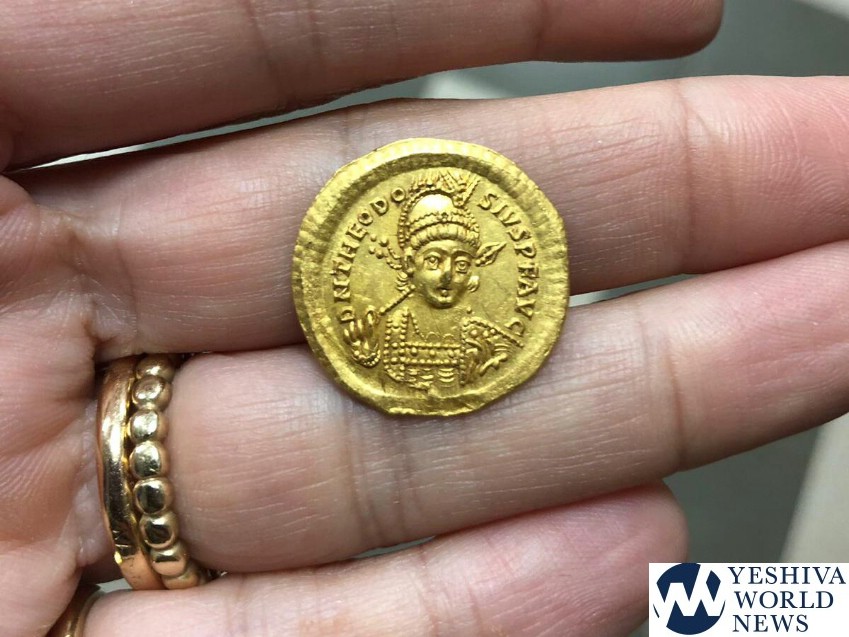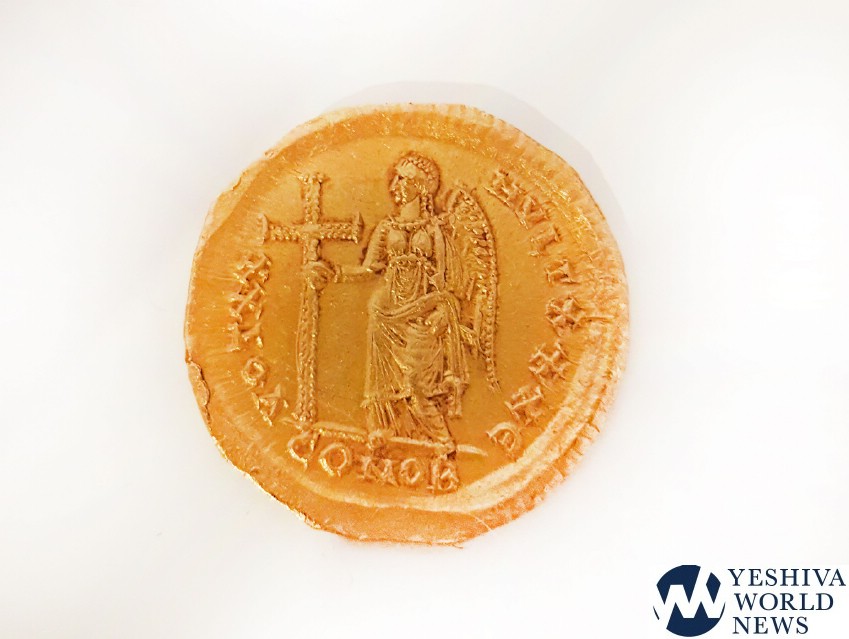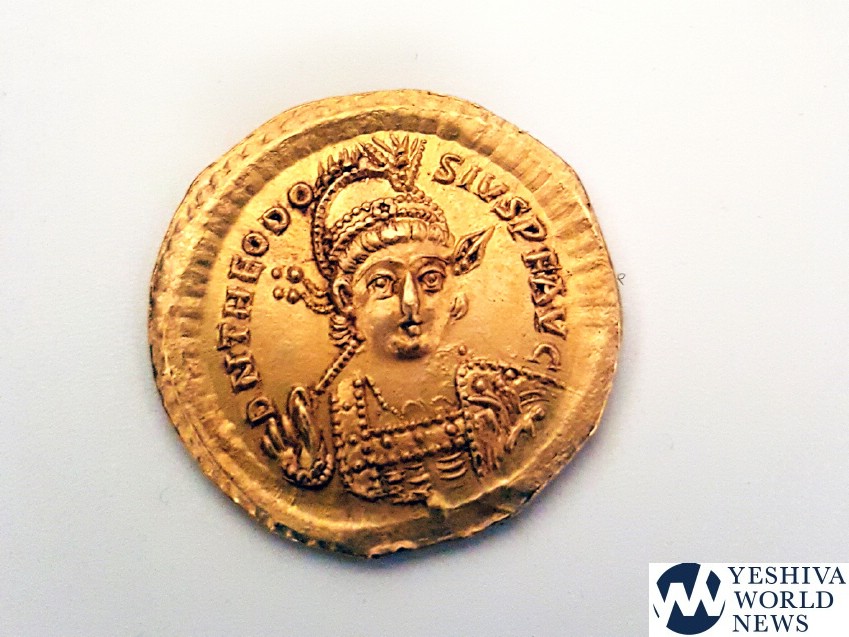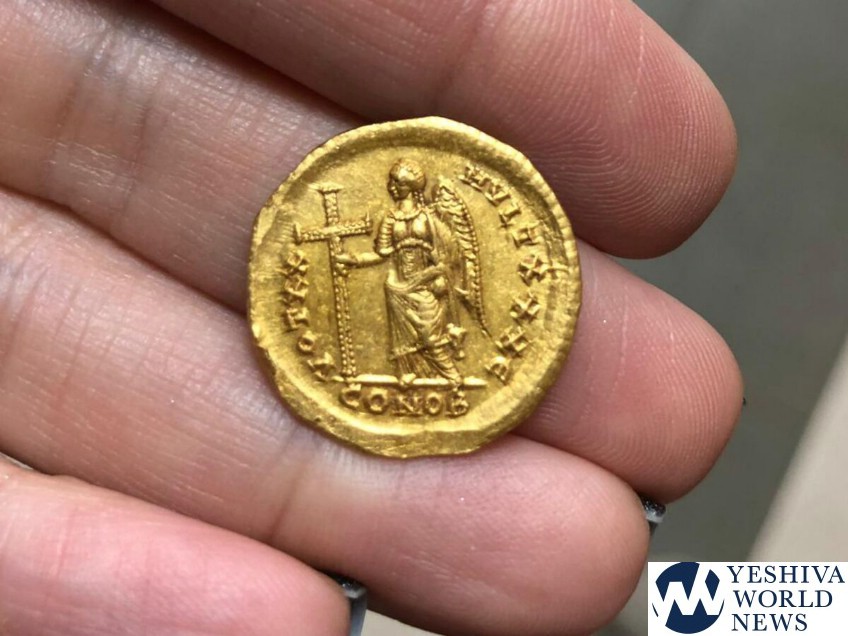(VIDEOS AND PHOTOS IN EXTENDED ARTICLE)
The coin, the first of its type discovered in Israel, was minted by the Byzantine Emperor Theodosius II, whose edicts led to the abolishment of the Sanhedrin Council and to the large-scale emigration of Jews to the Diaspora.
The Israel Antiquities Authority awarded the pupils a Certificate of Good Citizenship for transferring the coin to the State Treasuries.
1,600 years after the edict of the Emperor Theodosius II led to the abolishment of the post of the ‘Nasi’ the Head of the Sanhedrin, school pupils found a rare piece of evidence reflecting this dramatic moment in Jewish history.
In February 2019, four ninth grade students from the HaEmek HaMaaravi High School in Kibbutz Yifat in the Jezreel valley were orienteering in the fields alongside the Zippori stream in the Galil, adjacent to the Sanhedrin Trail, when they spotted a gold coin on the ground. The four pupils, Ido Kadosh, Ofir Sigal, Dotan Miller and Harel Grin, realized immediately that this was a significant find, and they reported it to their geography and history teacher Zohar Porshyan, who contacted the Israel Antiquities Authority.
The pupils handed the coin to Nir Distelfeld, the IAA anti-theft Inspector, and showed him the find spot in the field. Distelfeld awarded the boys certificates for their good citizenship, saying, “It is uncommon to find single gold coins as they were very valuable, and people took care not to lose them. I commend the pupils and their teacher for their good citizenship.”
IAA numismatic expert Dr. Gabriela Bijovsky explained the coin, “The gold coin is a solidus minted by the emperor Theodosius II in Constantinople (now Istanbul) around 420–423 CE. Similar coins are known from the Eastern Byzantine empire, but this is the first of its type discovered in Israel. One side depicts the image of the emperor and the other shows the image of the Goddess Victory holding the Staff of the Cross.”
Theodosius II was one of the most influential emperors of the Byzantine Empire, compiling an Imperial Code of Laws, designated the ‘Codex Theodosius’.
According to Yair Amitzur, IAA chief archaeologist of the Sanhedrin Trail, “The emperor Theodosius II abolished the post of the ‘Nasi’, the Head of the Sanhedrin Council, and decreed that the Jews’ financial contributions to the Sanhedrin be transferred to the Imperial Treasury.” Amitzur continues, “The Sanhedrin Trail initiated by the IAA, tells the story of the Jewish leadership in the Galil at the time of the Mishna and the Talmud in the Roman and Byzantine periods. It is symbolic that the gold coin discovered adjacent to the Sanhedrin trail reflects the period of dramatic events when the Sanhedrin ceased to function in the Galil, and the center of Jewish life transferred from the Galil to Babylon.”





(YWN Israel Desk – Jerusalem)











